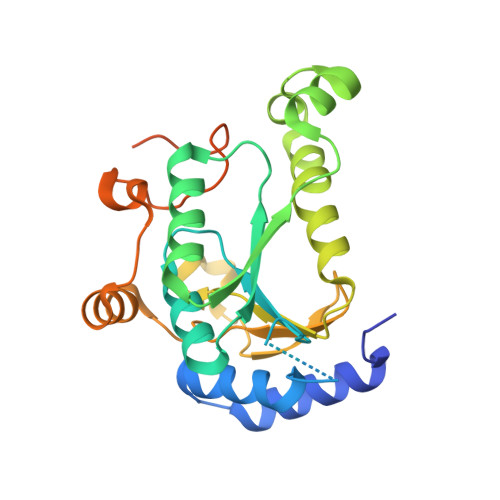Crystal Structure of the [4Fe-4S] Cluster-Containing Adenosine-5'-phosphosulfate Reductase from Mycobacterium tuberculosis .
Feliciano, P.R., Carroll, K.S., Drennan, C.L.(2021) ACS Omega 6: 13756-13765
- PubMed: 34095667
- DOI: https://doi.org/10.1021/acsomega.1c01043
- Primary Citation of Related Structures:
7LHR, 7LHS, 7LHU - PubMed Abstract:
Tuberculosis (TB) is the deadliest infectious disease in the world. In Mycobacterium tuberculosis , the first committed step in sulfate assimilation is the reductive cleavage of adenosine-5'-phosphosulfate (APS) to form adenosine-5'-phosphate (AMP) and sulfite by the enzyme APS reductase (APSR). The vital role of APSR in the production of essential reduced-sulfur-containing metabolites and the absence of a homologue enzyme in humans makes APSR a potential target for therapeutic interventions. Here, we present the crystal structure of the [4Fe-4S] cluster-containing APSR from M. tuberculosis (MtbAPSR) and compare it to previously determined structures of sulfonucleotide reductases. We further present MtbAPSR structures with substrate APS and product AMP bound in the active site. Our structures at a 3.1 Å resolution show high structural similarity to other sulfonucleotide reductases and reveal that APS and AMP have similar binding modes. These studies provide structural data for structure-based drug design aimed to combat TB.
Organizational Affiliation:
Howard Hughes Medical Institute, Massachusetts Institute of Technology, Cambridge, Massachusetts 02139, United States.
















